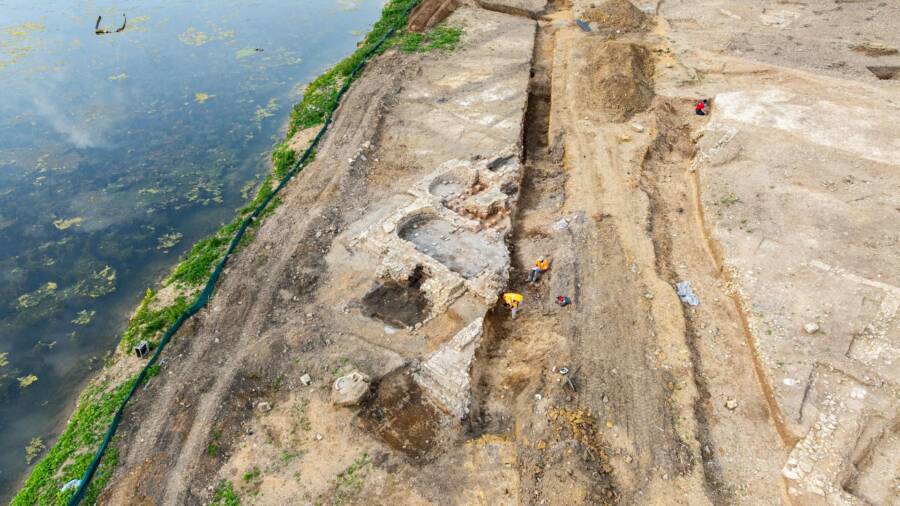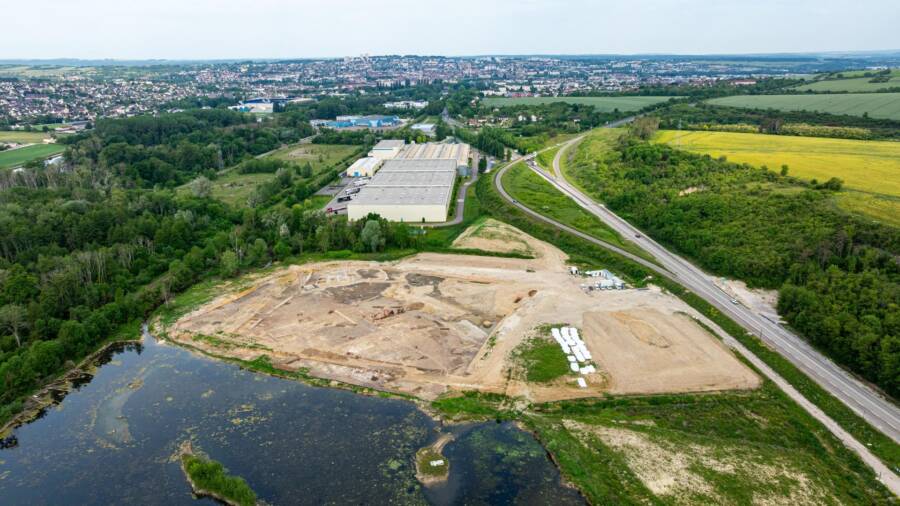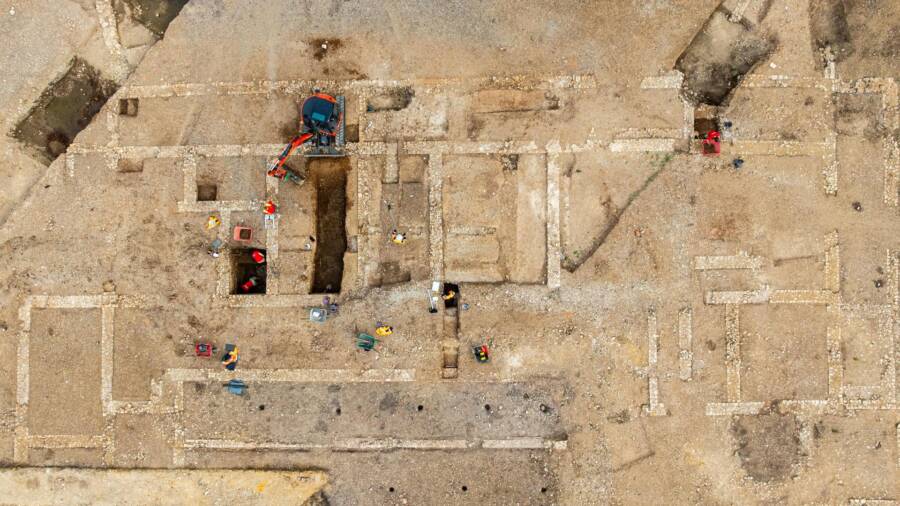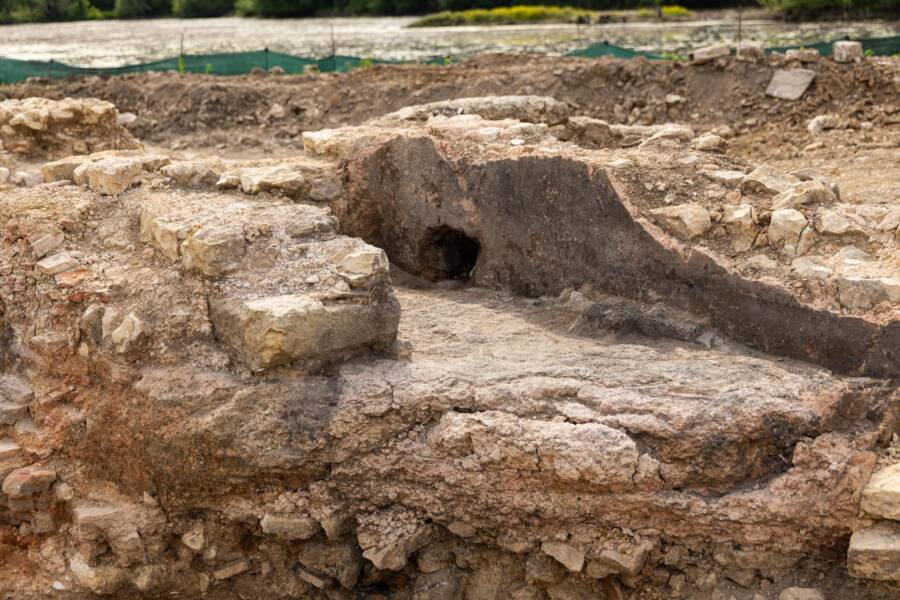Spanning a whopping 43,000 square feet, roughly the size of eight basketball courts, this massive villa stood in what was then the city of Autisiodorum between approximately the first and fourth centuries C.E.

INRAPThe Roman villa complex found near Auxerre, France is many times larger than initially believed.
Archaeologists have now fully unearthed the remains of one of the largest Roman villas that ever stood in ancient Gaul. This comes decades after a portion of the site, near Auxerre in central France, was initially discovered in 1966. Though a villa was known to have existed ever since, it was long assumed to be a relatively modest structure and not the massive complex that’s now been uncovered.
The new excavation has revealed the full extent of the villa, and it’s even more vast than archaeologists anticipated. As it turns out, the original structure discovered in 1966 was just a secondary outbuilding of a much larger residence. In full, the villa comprises 43,055 square feet — a great deal more than the 7,535 square feet discovered at first.
An Ancient Structure Discovered In 1966 Proves To Be Just One Small Part Of A Much Larger Complex

INRAPThe villa complex spans a whopping 43,000 square feet, making it one of the largest ever found in France.
In 1966, workers digging out a gravel pit came across the remains of an ancient home that measured around 7,500 square feet — a lavish dwelling to be sure, but nothing compared to what would eventually be discovered. Various details, according to a statement from INRAP, indicated that it was occupied from the first through fourth centuries C.E., not long before the fall of Rome. Meanwhile, details such as mosaics and underfloor heating indicate that the structure belonged to wealthy elite.
When archaeologists recently uncovered the full complex measuring 43,055 square feet, it provided new insight into the purpose of the structure that was unearthed 60 years ago. It is now assumed that the 1966 discovery was a secondary wing of the much larger villa complex, which included a residential sector known as pars urbana and an agricultural part known as pars rustica.

INRAPAn aerial view of the private baths unearthed at the complex.
The entire complex was surrounded by a perimeter wall, with a quadrangular basin to the north and a small fountain to the south. The eastern wing also contains thermal baths, and the complex is filled with various reception rooms, work areas, and what seems to be a kitchen.
Researchers said they believe that another large quadrangular space along the western boundary might have been added at the same time as the structure found in 1966. This would indicate two separate stages of construction — one for the larger complex, another for the secondary structures. Further research, however, would be required to confirm this.
Insight Into The Daily Lives Of Wealthy Elites In Roman Gaul

INRAPThe site will be open to the public via shuttles throughout the summer.
Similarly, archaeologists said that additional study of this villa could yield further insights into the daily lives of its inhabitants. This would provide a better understanding of elites in Roman Gaul, though even based on current findings, it is safe to make a few assumptions.
Private baths, for one, are a key characteristic of villas from Roman Gaul and were typically part of the residential portion of the complex. They also frequently feature sophisticated architecture that uses refined materials and flourishes such as marble, mosaics, frescoes, water basins, fountains, and gardens that were sometimes divided into smaller, private sanctuaries.

INRAPA close-up view of the thermal baths at the villa complex.
As research at the site continues, perhaps more will be revealed about the people who once occupied the villa. For now, it remains an unparalleled and impressive site from the days of ancient Rome, a discovery unlike anything else ever found in the region.
After reading about this sprawling villa complex, read about when Rome fell. Then, learn about the worst Roman emperors.





